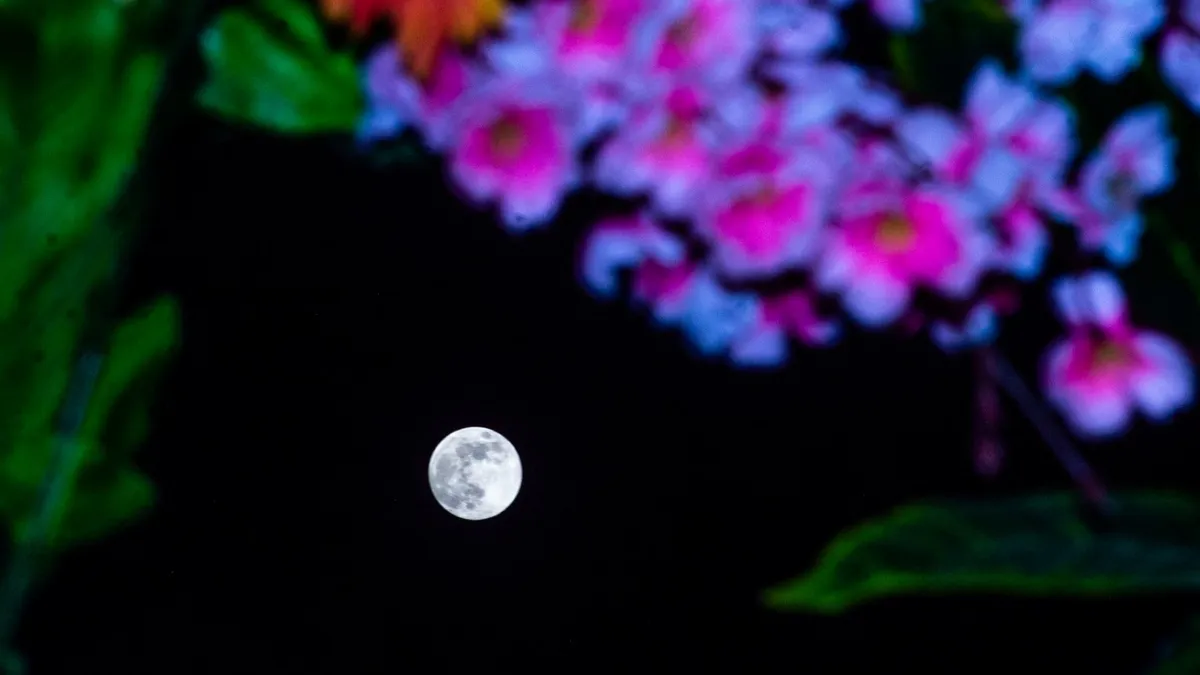
Tonight, the stunning Full Flower Moon of 2025 will grace the night sky, a phenomenon celebrated for its breathtaking beauty and significance. The May full moon gets its name from the vibrant wildflowers that bloom abundantly during this time of year, making it a favorite among skywatchers around the globe. At 12:56 p.m. EDT (17:56 GMT) today, the moon will reach its peak illumination, but for observers across the U.S., it will remain below the horizon during this time.
As the evening unfolds, skywatchers can anticipate a dramatic lunar display when the Full Flower Moon rises over the southeastern horizon around 8:30 p.m. local time. If you miss tonight’s full moon, don’t fret; it will still appear full for a night or two, making it accessible for casual stargazers. However, the exact timing of the full moon varies based on your geographical location. To pinpoint the best viewing times, consider using a stargazing app like Starry Night or visiting a reliable astronomy website such as in-the-sky.org.
If you’re passionate about astronomy, be sure to explore our guide to the best stargazing apps in 2025. These tools are indispensable for anyone planning to observe the wonders of the night sky, including the enchanting Full Flower Moon.
As you gaze at the moon tonight, you may notice it appearing slightly larger than usual when it is near the horizon—a captivating optical illusion known as the moon illusion. Despite the moon's actual size remaining constant, our brains perceive it to be larger when it is closer to the horizon. Leading theories suggest this phenomenon arises from the way our minds judge distances, although NASA acknowledges that there is no single definitive explanation for this curious effect.
In addition to its size, the Full Flower Moon may exhibit a range of colors, particularly a yellow or orange hue shortly after moonrise. This color variation occurs because the sunlight reflecting off the lunar surface must travel through a greater expanse of Earth’s atmosphere when the moon is near the horizon. This journey scatters the shorter, bluer wavelengths of light, allowing the longer, redder wavelengths to dominate, resulting in the moon's warm, golden tones.
The Full Flower Moon also offers a fantastic opportunity for astrophotography enthusiasts. Particularly during moonrise, photographers can creatively capture the moon alongside the stunning landscape below. If you’re interested in lunar photography, be sure to check out our guide to lunar photography for tips and techniques. Considering an upgrade to your gear? Our guides on the best cameras for astrophotography and best lenses for astrophotography will help ensure you’re well-prepared for capturing the beauty of the night sky.
Tonight's celestial display won’t be limited to the Flower Moon. As the moon rises, it will be accompanied by the stars of the constellation Libra on its left, with the bright stars Spica and Arcturus shining prominently above. In the western sky, Jupiter and Mars will also be visible near moonrise, while Venus and Saturn will rise in the east as the moon sets on the morning of May 13. This rich tapestry of celestial bodies makes tonight an exceptional occasion for stargazing and appreciating the beauty of our universe.